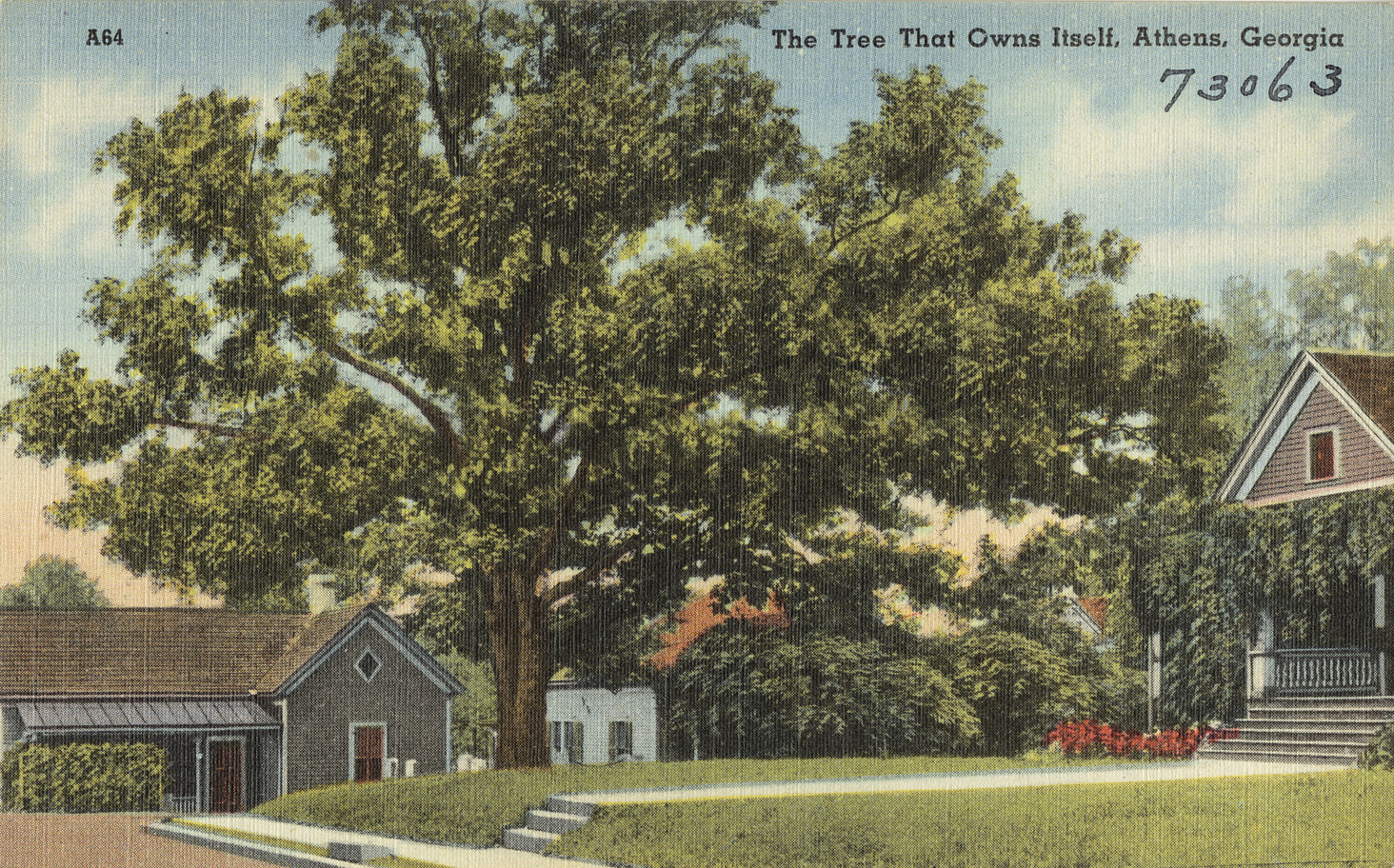
The image is from wikipedia and may be viewed in its full glory (i.e. higher resolution) here. The image dates to sometime between 1930 and 1945.
I read the story first in Atlas Obscura and then began to poke around a bit.
Most frequently described as a legend, the story is that a Colonel William Henry Jackson, who died sometime between 1820 and 1832 deeded the tree to itself. No deed has been found and the first public mention of the tree owning itself appeared in 1890.
Purists like to point out that: “Legally, of course, the tree isn’t able to own itself regardless of Jackson’s wishes. In fact, careful examination of property lines reveals that the tree isn’t even on his property. It’s officially part of the street (since it’s part of a median in the middle of the street), so its care falls to local authorities.” Still, the article on the Treeographer continues, “However, the tree is such a well respected landmark in the city that the Athens-Clarke County government has declared that in spite of the actual legality, the tree owns itself. Because they said so.”
Like many trees, this white oak went through the vicissitudes of aging, weather, and (likely) other assorted attacks on its structural integrity and eventually fell in 1942. Thinking that a relative can inherit, some enterprising individual(s) planted an acorn from the tree at that time, which is now known as the Son of the Tree That Owns Itself and is flourishing to this day.
I must take issue with calling the young tree the son as it is both son and daughter: oak trees are monoecious and each tree will have both male and female flowers. Technically, it’s better to call the tree the Child of the Tree That Owns Itself. The tree must be pollinated by a neighbor so any acorns that develop into a new tree suggest that the female aspect of the tree has been relied upon for production of the next generation. But this is probably splitting hairs.
